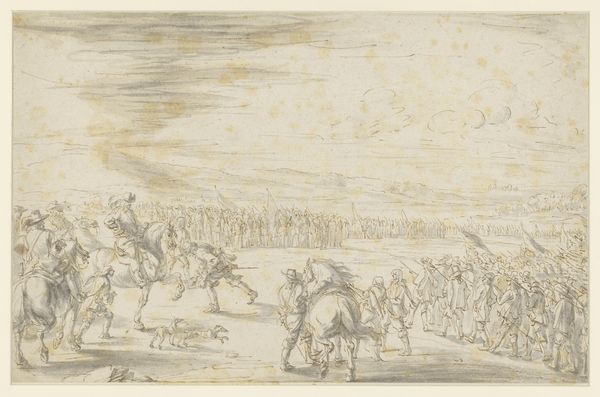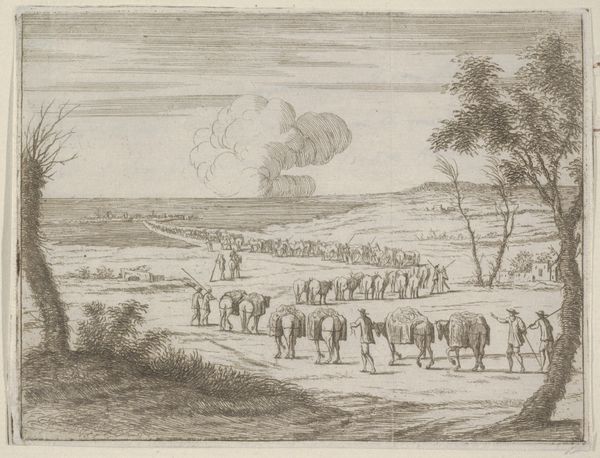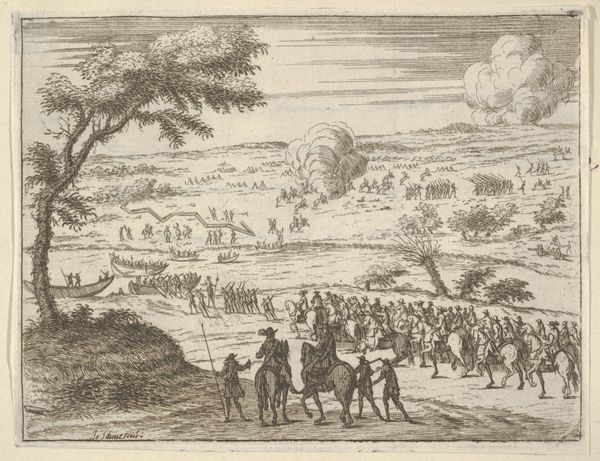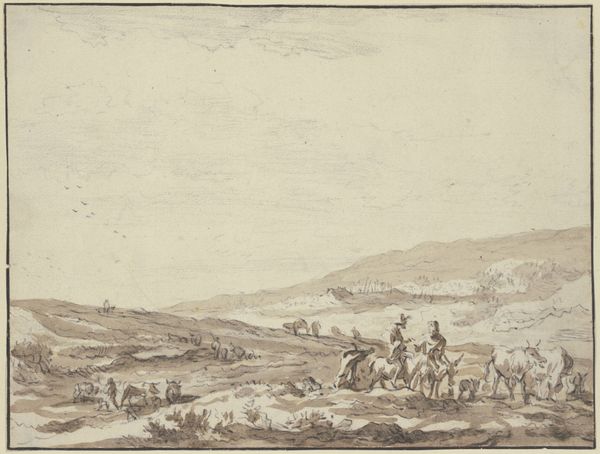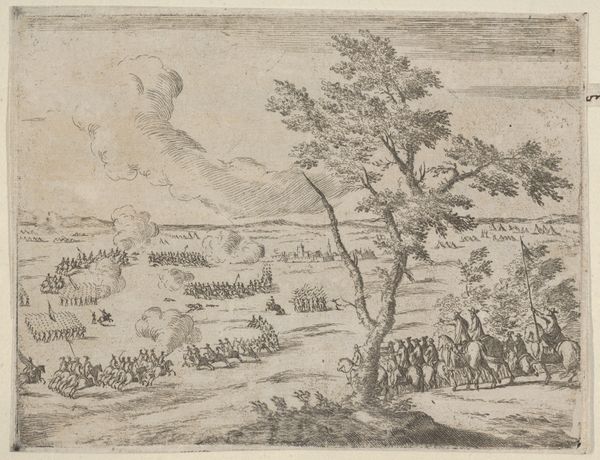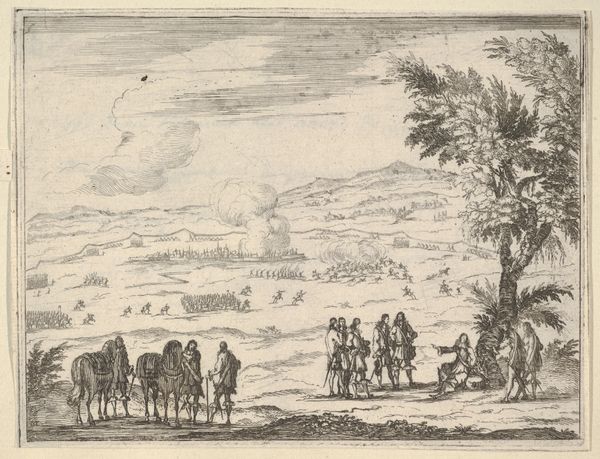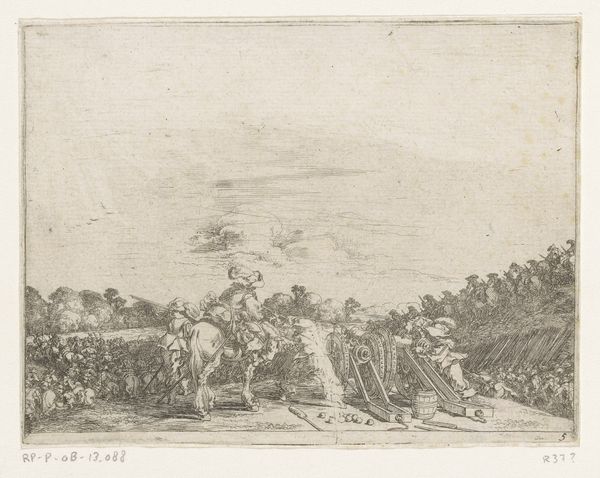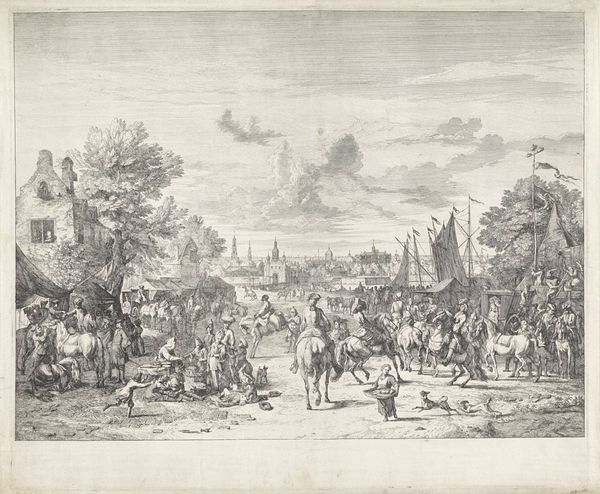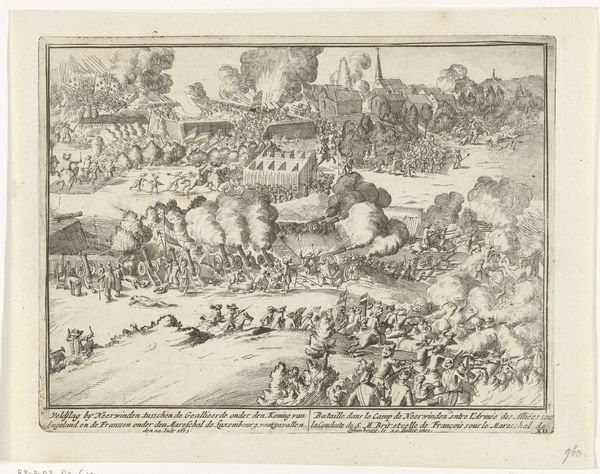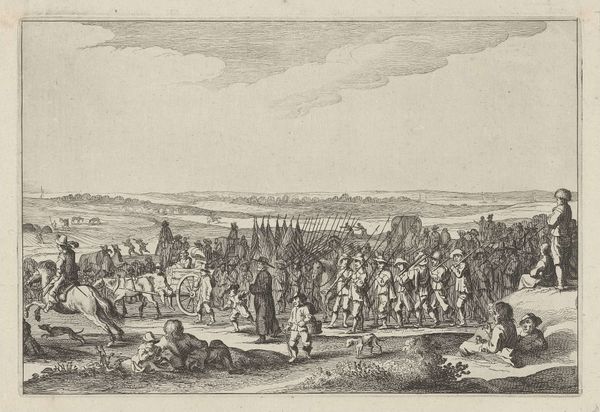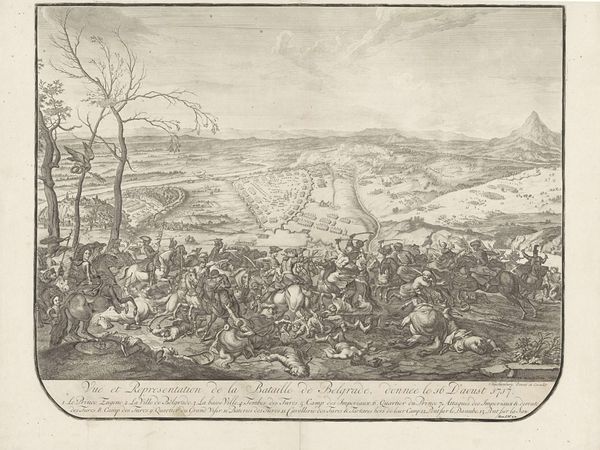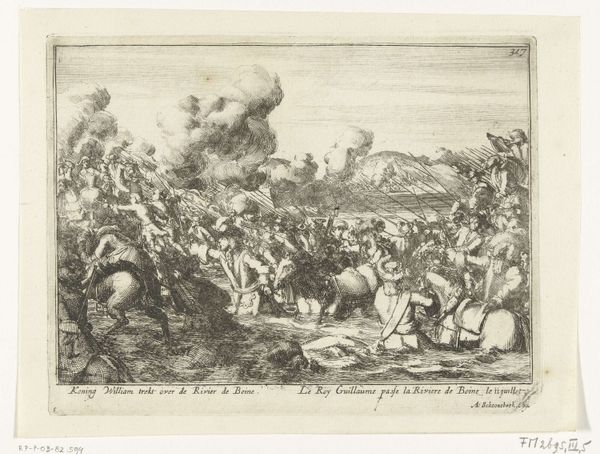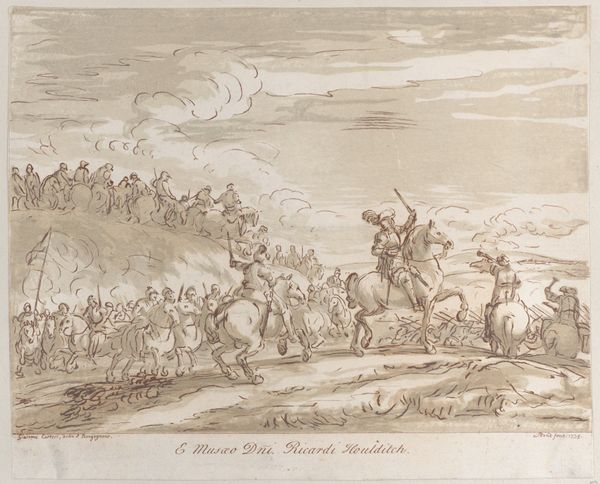
print, engraving
#
baroque
# print
#
landscape
#
line
#
history-painting
#
engraving
Dimensions: height 157 mm, width 210 mm
Copyright: Rijks Museum: Open Domain
Dirk Maas created this print of Willem III at the Battle of Boyne around 1690 using etching, a printmaking technique with a long and fascinating history. The process begins with a metal plate, traditionally copper, coated with a waxy, acid-resistant substance called a ground. The artist then draws through the ground with a pointed tool, exposing the metal beneath. When the plate is dipped in acid, the exposed lines are “bitten,” creating grooves in the metal. These grooves hold the ink, which is then transferred to paper under high pressure. The resulting image, like this battle scene, has a distinctive linear quality, almost like a pen and ink drawing. This method was favored for its relative ease and the subtlety of line it allowed, perfectly suited to capture the drama and detail of this historical event. The very act of etching, with its reliance on craft skill, suggests a connection to a broader tradition of artisanal production. It reminds us that art is not just about representation, but also about the labor and techniques embedded in its making.
Comments
No comments
Be the first to comment and join the conversation on the ultimate creative platform.
